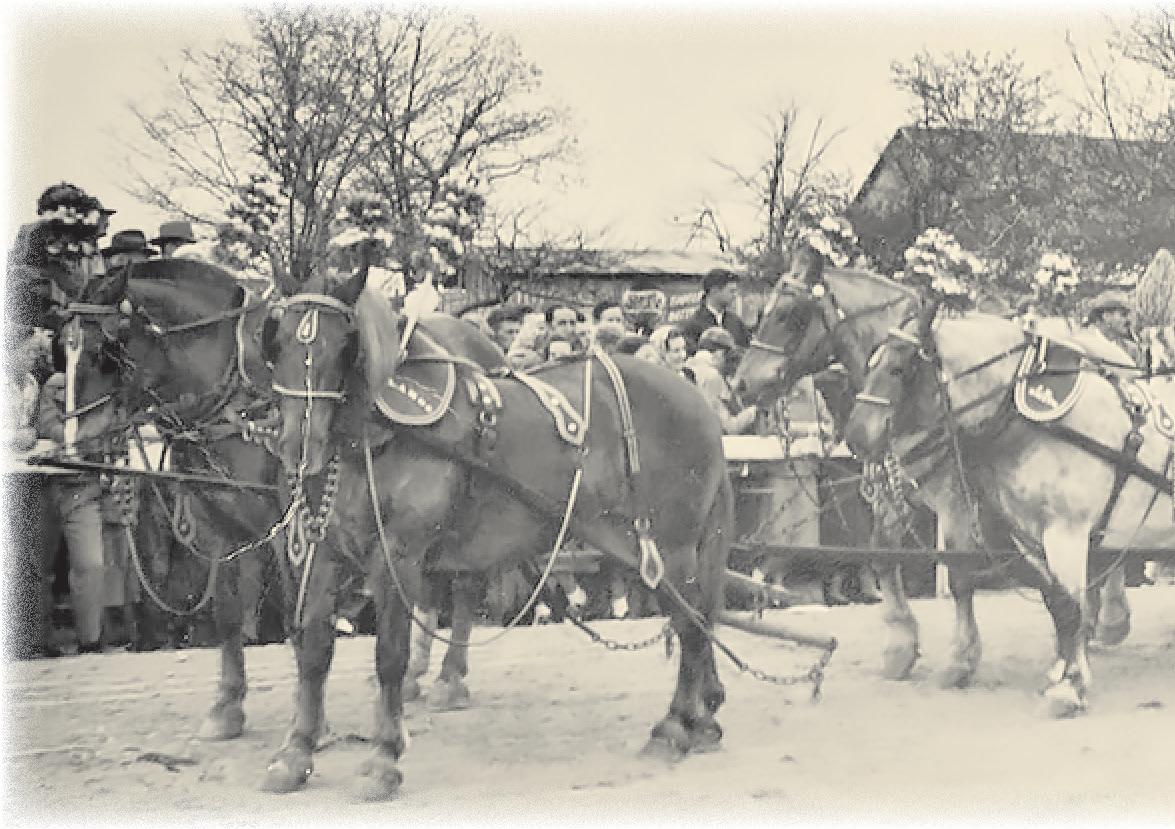As the wheel turns Memories from the Old Mill of Guilford with its familiar red water wheel are being compiled into a book by CHRIS BURRITT OAK RIDGE – The Old Mill of Guilford is a good listener. For two-and-a-half centuries, the Oak Ridge landmark has witnessed history, overhearing whispers of men wanting to buy moonshine. It watched as parents weighed their children on scales intended for sacks of flour. The mill heard the crack of gunshots as boys perched in the upper windows took aim at snakes and rats. If it could have turned on its stone foundation, it would have seen a wagon coming down the dirt road, drawn by two mules toting corn and wheat and a little girl named Marie Lowrey Armstrong.
“It was just such a treat” to visit the mill, recalled 99-year-old Armstrong, one of more than 40 people who gathered in the mill’s tobacco barn one afternoon in mid-September to share stories about the mill. “It has lasted for so many years.” Dating back to 1767, the mill fell into possession of British troops 14 years later, before they fought American soldiers in the Battle of Guilford Courthouse. That’s an important part of the Old Mill’s history that has been documented time and time again. So, approached by the Guilford Battle chapter of the Daughters of the American Revolution to write a book about the mill, owner Amy Klug asked if instead
File photo/NWO
Tales and memories of the Old Mill of Guilford, which dates back to 1767, are being compiled into a book. they could collect memories from people still alive to share them.
$
100 off
(336) 993-8900 www.TriadDogFence.com
SmartFenceTM
Stay connected with your pet
“What are the experiences that people had here?” Klug asked, explaining her intentions to those who gathered around a table covered with a checkered red-and-white cloth. A vase with a white tulip rose sat in the middle.
Klug is part of the mill’s official history: she and her husband, Darrell, purchased the property in 2008. They joined a long list of owners reaching back to Daniel Dillon, a Quaker who gained permission from British authorities in 1764 to build a grist mill on the Reedy Fork of the Haw River, according to a chronological history by Jack Perdue. Although she’s not a historian, Klug is part of the tradition of oral history, made
Fall 2019
famous in recent decades by the PBS documentaries of Ken Burns.
“Before these memories die, we need to collect them,” Klug said in an interview as she prepared for what she called “an informal conversation to gather the stories and tales of the mill.” Klug kicked off the Sunday afternoon gathering by recalling a story she had heard from others about people visiting the mill during Prohibition to buy moonshine from a still hidden on the property. She said the password for getting a bottle of the illegal liquor was “Ferdinand.” Annie Laura Perdue took over as miller in 2007 after the death of the former and beloved miller/owner, Charlie Parnell (Charlie’s wife, Heidi, equally beloved, died six months afterward). Perdue recalled her conversation with a man from Texas who had grown up in Oak Ridge and visited the mill with his grandfather when he was a boy.
“They always told us certain places we shouldn’t go,” said Perdue, retelling the Texan’s story. “You don’t tell 12-year-old boys they can’t go somewhere. They found the still. It was up this little creek, way over in the woods.” Phyllis Anders shifted the conversation from sin to salvation. “I remember mostly the mill having a pond across the road,” she said,
continued on page 22
5









